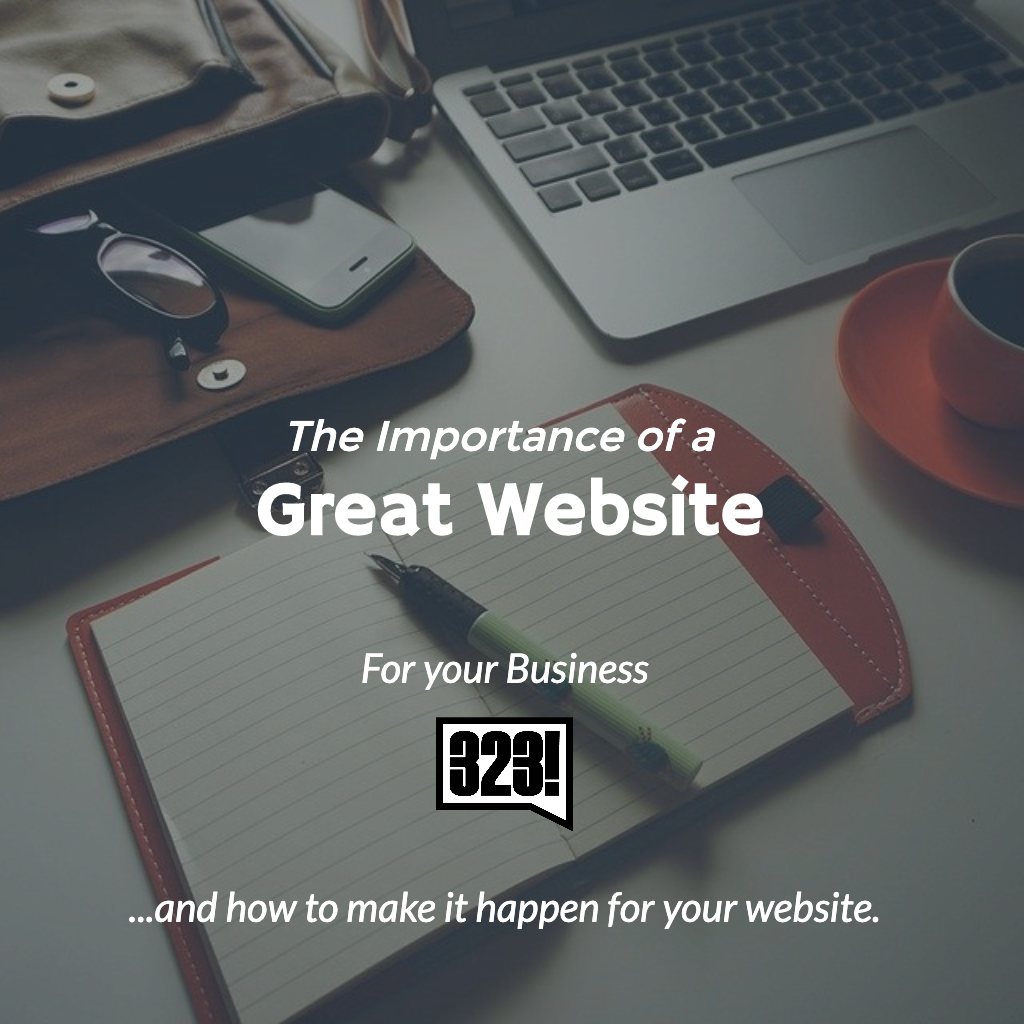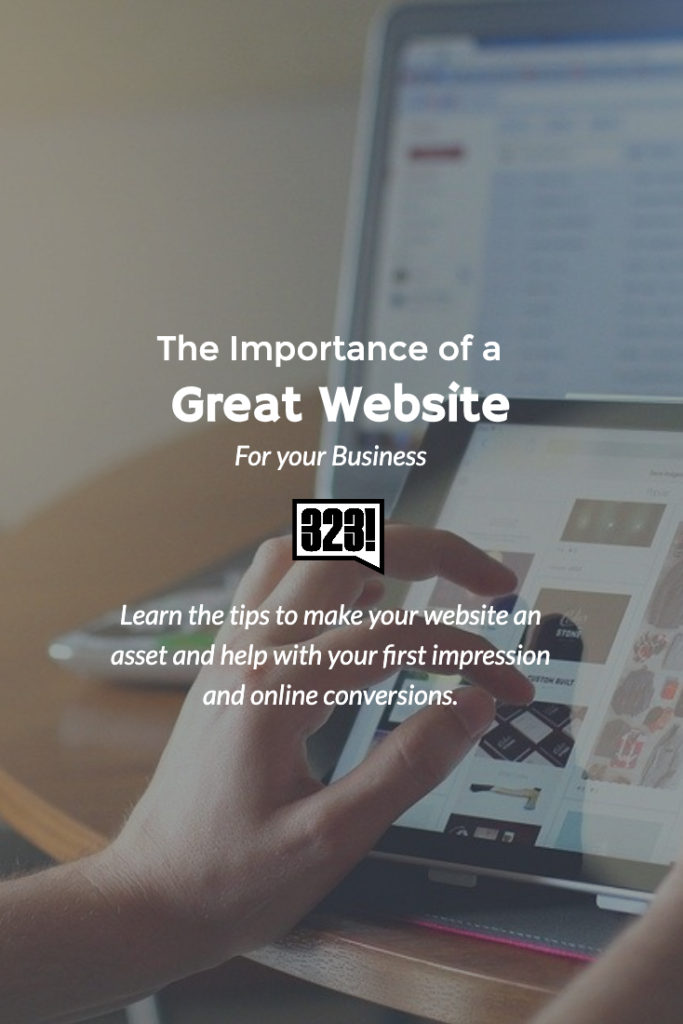Seeing as the web is easily one of the most efficient and cost-effective ways to market your business, it is imperative that you keep your website updated. Ideally, your website is checked often for relevance, speed, and safety.
It’s important to keep up with the seemingly ever-changing trends in website design, especially since regular design updates can save you money! You don’t need to have the most current website around, but you do want to ensure that you’re keeping up with web standards. Keeping in mind the people who aren’t familiar with technology, you want to provide consistency while they are browsing your website.
Search engines like Google are always updating their algorithms to provide the best search results. Updating your website to stay on top of these updates is crucial in allowing your site to maintain (or improve) it’s ranking.
1. Visual Appeal
The appearance of your website is a direct reflection of your business. First impressions are crucial for positioning your company as an authority in your field. Regularly updating your website to stay on top of the recent trends will allow you to portray this vision.
If your site is poorly structured, or perhaps looks outdated, it is easy for potential clients to subconsciously assume that your business model may also be poorly laid out. You want your site to highlight the products and/or services that you offer in a way that encourages visitors to want to learn more. This will open the door for them to purchase what you are providing.

Your website should be designed to look great on any device. Regardless of whether visitors view your site on a mobile device, tablet, laptop or desktop computer, your site should automatically adjust. Maintaining a responsive design will help prevent potential clients from looking elsewhere for help because they are frustrated with how your site looks at first glance. Accommodating all modern devices will keep your website looking sharp and easy to navigate.
2. Content
First impressions will come mostly from the overall design of your website, but the work doesn’t stop there. Now that you’ve grabbed their attention, expand on that with great content. Make sure your content provides important information about the products and services you offer while remaining interesting enough to keep your readers engaged.
A great time to update or tweak your content is when updating or redesigning your website. Ensure that you’re writing copy that is effective, relevant, and simple. Don’t lose sight of the fact that only have 2-4 seconds to engage your visitors and hopefully turn them into customers. Your website will already look great, so be sure to grab their attention with keywords and phrases.
3. Capability
From a marketing standpoint, your website’s effectiveness is essential. You need to be able to keep an eye on your statistics so you can see what visitors are clicking on. You’ll be able to see which pages they visit and how long they stick around with a tool such as Google Analytics or Databox. Other ways to study the capabilities of your website include techniques such as heat mapping, conversion tracking and user recordings. The better you understand how visitors are using your site, the easier it will be for you to help them find the information that they’re looking for, which in turn will lead to them contacting you.
One way to make your website more effective is to make use of a Call-to-Action (CTA). A CTA can be a button or link that you place on your website to drive browsing customers into potential leads by completing an action on your website. Ensure that any CTAs used on your site are clearly defined, as well as interesting enough that visitors will actually follow them! The easier you make it for your visitors to find the end goal, the more of them you will help get there.

4. Search Engine Optimization (SEO)
Now that your website is redesigned, looks great on every device, and is loaded with well-informed content, you need to make sure people can find it by updating your SEO settings. The rules around SEO are constantly shifting as Google updates their algorithms, which basically means that every time they make their own updates, your website is potentially affected. By staying on top of the new updates as they happen, you can prevent yourself from falling further and further behind.
Do a quick check (for free) with a tool like SEM Rush or Neil Patel’s Uber Suggest to see how your website looks to Google.
As we mentioned above with content, the best time to update your current SEO settings is while updating your website’s design and content. Since you’ve already got work being done on the back-end of your website, updating the content and code at that time is efficient. Make sure your web designer considers all these factors while they’re rebuilding your site.
5. User Experience
Visitor trends will always change as technology does. A common (but now-outdated) design aspect from a few years ago stated that the most important information on your website needed to be located “above the fold”. When a visitor viewed your website, you needed to show them the most important features without requiring any scrolling. Now that more than 50% of online traffic occurs on mobile devices, having to use your finger to scroll down the site is no longer an issue.

Website navigation is another user experience tool that must be kept in mind. Many websites use horizontal navigation, which is great when viewing a site on larger devices. However, when you try to view the same site on smaller screens, such as a tablet or mobile phone, the navigation system needs to adjust accordingly. A small icon consisting of three horizontal lines (sometimes called a hamburger menu) is now universally recognized as a button that will open a menu on the website. Generally, this menu will open like a vertical menu on smaller screens to allow enough space to make your selections.
6. CyberSecurity
There are stories all the time about websites getting hacked. Often, the most publicized ones include an image of a defaced homepage that shows who hacked the website and how/why they did it. Less obviously, there are many other ways that hackers can compromise your website. Perhaps they gain access to the backend of your site and use it as a spam server. This slows down your website to a crawl and can even have your site blacklisted eventually. This means that your web address (what you type in to reach your website) is added to “no-go” lists on servers around the world and will block visitors from getting to your site and connecting with you due to the perceived danger of your site. A big problem for your business, no doubt.
To protect you, your website, and your email from being hacked, one of the most important things to do is make sure your website’s software stays up-to-date. Regardless of what content management system your website is using, you need to ensure that the programs and software you’re running keeps up with modern technology.
Make sure your website is being hosted with a reputable company that cares about security. There may be a few extra hassles that come with the necessary cybersecurity, but keeping your site and information safe is well worth it in the long run.
7. Website Loading Times
In today’s turbocharged world, it is crucial that you grab the attention of your visitors within seconds of their arrival at your website. All of the points that we’ve covered above play a part in this process, but none of them will matter if your visitors become impatient waiting for your website to load in the first place. Loading times have become so important that even Google is rewarding sites that load faster with better search results placement. Yes, you read that correctly – Google will place you higher in their search rankings if your website loads faster than your competitor’s.
Factors such as image sizes, optimization of your website’s file system, page caching, and even your web hosting account will affect how fast your page loads. Luckily, there are methods available for optimizing all of these. If you serve many local clients and have a lot of traffic to your website, you should avoid using a shared web host, which accounts for the vast majority of hosting providers. Talk to your web designer and/or developer to discuss options to speed up your website.
When?
SEO, content, and cybersecurity updates should be done at least monthly. It’s important that your website is a safe place for you and your visitors, and you will also want to ensure that your content remains accurate and up-to-date.
Usability and effectiveness updates should be performed at minimum during your annual website audit.
Website redesign (or at least a simpler refresh) is recommended for every 2-3 years. Keep in mind, even that period of time will be a very long time in terms of the technological improvements that have been made.
The points listed above are a few of the many ways you can help visitors find and enjoy your website. Having your site updated, loading promptly, and safe for visitors will also help Google rank your site higher in their search results. 323 Media provides all of these services and more, which allows you to focus your time on running your business.
Request your own Free SEO Page Audit Report today!

- The Importance Of A Great Website For Your Business - December 6
